
Introduction
From age 21-24 my friends and I closed out many a bar, it seemed like a good idea at the time. I had a girlfriend and wasn't looking for a drunken fling so I was usually the designated driver. I often had the joy of performing the "drunken roundup" as I called it. It also meant that I saw closing time with a sober mind. Putting it into perspective, it was a gloomy time. The celebratory mood that filled the air a mere two hours ago was a distant memory. Throughout the evening the more desirable people trickled out the door. By the time last call was announced several people rushed to send off the night with a final drink. They'd look for a last minute hook-up then leave feeling dejected, sometimes angry. When closing time was finally called there was always that one lonely drinker still at the bar, trying to cling on until the last possible moment.
Video game systems aren't all that different. A console manufacturer starts hinting that they're working on a new system. There aren't any final specifications, release dates, or even potential names, just hints that something is coming. Game publishers who have good ideas in an early development stage hold-off until they know more. The game selection for existing systems starts to grow thinner. The console manufacturer makes a grand announcement about their upcoming system, last call. The publishers work overtime to produce games for it. Projects already underway for existing systems get reassigned to the B, or even C, team. They're far enough along that scrapping or porting them wouldn't be worthwhile. Some are rushed out the door like the frenzy of last minute drinkers. Others sit in a stool, nursing their drink until the bitter end, closing time.
This article is a tribute to those games that were the final lonely patron of a once festive tavern on a Saturday night. While another three-way console war is reaching the height of its fury, let's reflect on the final days of systems past. Maybe we can even learn how these now hot consoles may spend their inevitable last days.
Notes:
I know some readers won't be satisfied but I had to apply a standard. At least once a year someone takes time out of their busy schedule to email me that this article is totally invalid because I didn't include blah blah blah. The intent of this article is to look at the fading moments of game systems. This is not a Wikipedia entry on the final games produced for systems, a thing I'm sure exists.
There are obviously some systems missing from this list. See the Missing Systems section for a more detailed explanation on which systems and why.
Contents
Fairchild Channel F - Alien Invasion (1981)

The Fairchild Channel F was a groundbreaking system by being the first to use cartridges. Although it had a full year head start over Atari it was quickly eclipsed. Ordering these chronologically means I have little to say about the first few entries since I didn't experience them as current-gen systems. I've only played the Fairchild Channel F at the Midwest Gaming Classic and found it to be a fun system. The controller was quite advanced for its time, it was something of a joystick-paddle hybrid. Graphically it looked to be close to the Atari 2600. I wouldn't mind owning one of these someday.
Tracking down the last release was easy since Fairchild F games are numbered. Alien Invasion, at #26, was the final game produced for this innovative system. There is a small homebrew community that produced an impressive Pac Man clone among other things.
The release year for Alien Invasion isn't written in stone but most sources list it as a 1981 release.
Microvision - Alien Raiders and Cosmic Hunter (1981)

The Microvision was the first cartridge-based portable system and had a total of 11 games. Alien Raiders and Cosmic Hunter were the only releases it had in 1981 but the exact order is undocumented.
Although no emulators for the Microvision exist (yet) there are some Javascript simulators. Emulation would be tricky anyway as the controller for each game was built into the cartridge. Sadly this is a pioneering system that few will ever be able to play.
Intellivoice - TRON: Solar Sailer (1982)

If I count the 32X as a system then I suppose I can count the Intellivoice as one. Of course I wouldn't count the NES Light Zapper as a system. I guess I'll go with "if it plugs into a cartridge or expansion slot it's a separate system". Wait, then that would make the N64 Expansion Card count as a "system". OK look, I really just want to include the Intellivoice here, do I need to justify why?
A total of four games were released for the Intellivoice (not including World Series Major League Baseball since it also required the ECS, see the next entry). The first three were released concurrently with the attachment with TRON: Solar Sailer bringing up the rear.
I played the first three Intellivoice games more than I care to admit. I am a big Intellivision fan and thoroughly enjoy them despite the grainy vocals. TRON, on the other hand, is just weird and confusing. I can't make sense of it at all.
Entertainment Computer System - World Series Major League Baseball (1983)
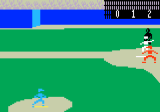
Yeah, I'm not including the plethora of other computers that were little more than a game system with a keyboard attachment. This is a matter of convenience though, while reading about the previous entry I spotted this one.
The Entertainment Computer System (ECS) was an accessory Mattel didn't really want to release. In early Intellivision catalogs they advertised that a keyboard for the system was "coming soon". Eventually the FTC began imposing fines on Mattel until they kept this promise. The result was a product rushed out to just barely meet the requirements set by the FTC. Mattel feigned support for the system and its lifespan was very short.
World Series Major League Baseball was the last game released for the ECS, it also supported the Intellivoice module but didn't require it.
World Series Major League Baseball was way ahead of its time. It was leaps and bounds ahead of other baseball games of the era including the Intellivision offering. Unfortunately very few were able to enjoy the game when it was new.
Bally Astrocade - Cosmic Raiders (1983)
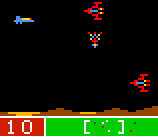
The Astrocade is very high on the "list of systems I wish I owned". I should probably start scouring ebay instead of hoping I accidentally bump into one somewhere. The system had the potential to be successful. It could produce better graphics than the Atari 2600 and carried the name of a popular arcade developer.
Like the Fairchild Channel F entry, this is based on the cartridge number: #2019 - Cosmic Raiders. It's not a bad game, an obvious Defender clone but passable nonetheless.
A couple homebrew cartridges were released after Cosmic Raiders but overall the Astrocade hasn't attracted much post-life attention.
Sources:
Odyssey2 - Power Lords (1983)

Magnavox introduced the first home video game console in the form of the Odyssey. The sequel didn't hold quite as much historical significance. It never caught up with the Atari 2600 and looked terrible compared to the Intellivision and ColecoVision.
Power Lords was released moments before the system was discontinued in the United States. The game is odd, it took a few minutes for me to figure out whether I was controlling the snake or something else. I won't say it's bad, it's just not like anything else I've played before.
Sidebar - Also dead in 1983: Vectrex and Arcadia 2001
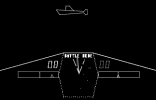
1983 and 1996 were the two years that saw the most console deaths, albeit for completely different reasons. In 1996 the PlayStation was booming and Nintendo 64 hot off the presses. All the pretenders to the 32-bit generation were discontinued in 1996 along with a couple portable systems.
1983, on the other hand, was a total free-fall. The video market collapsed and systems starting dropping like flies. Among the casualties were the Vectrex and Arcadia 2001.
Like the Fairchild Channel F and Bally Astrocade, the Vectrex numbered its cartridge catalog so it should be easy to sort out the last game. However, the light pen and 3D games were numbered separately making it hard to tell which one was really last. It's either Polar Rescue, Crazy Coaster, or possibly Pole Position.
The Arcadia 2001 was released in 1982, just in time to experience the legendary crash. In many ways it exemplifies why the crash occurred. Within a year it had a dozen games that were all knock-offs of titles already available for other systems. It also had numerous hardware variants manufactured by different companies. This only further confused shoppers already attempting to sort through stacks of Atari 2600 clones. Sure the graphics were sharper than most competitors but consumers didn't care at this point. It looks like something called Super Bug is the likely winner here. However, some of these hardware variants also played different games. So Super Dimension Fortress Macross, or maybe something else entirely, could be the last game published for it too.
Sources:
RDI Halcyon - Raiders vs. Chargers (1985)
The RDI Halcyon was a failed attempt to bring a laserdisc system into the home. In a way, it was like the Neo Geo. It allowed mere mortals to play full-blown arcade games on their television. No suffering through lame conversions, you could run the real thing. With a price tag of $2500 (in 1985) it never got off the ground. I've only seen one article confirming the system was ever sold in a store.
Only two games were ever released, Thayer's Quest and Raiders vs. Chargers. Thayer's Quest was the pack-in game so Raiders vs. Chargers is the "last game" by default. I suppose it's really a tie.
Atari 5200 - Gremlins (1986)

We've talked about a lot of obscure systems, it's time to move on to the first mainstream victim of the legendary video game crash of 1983. We all know the story, a deluge of awful games destroyed mainstream consumer interest in gaming. Atari was financially devastated and (partially) sold to Commodore founder Jack Tramiel who decided to scrap the whole video game thing and focus on the personal computer market, this turned Atari into the computing powerhouse it is today. In the process of this reinvention the young Atari 5200 was canned in 1984, the same year Gremlins was developed. It was produced but sat in limbo for two years until the decision was made to clear out the remaining stock of 5200 games.
Gremlins is an enjoyable enough game. You control a sword-wielding Billy on a quest hack-up gremlins while preventing the fuzzy little Mogwai from joining their ranks. If you've seen the movie it makes sense.
The Atari 5200 has the dubious distinction of being the only system on this list that died before the system it was intended to replace. Although I suppose one could argue the 32X and Sega CD fit this criteria as well.
Sources:
Atari7800.com - Atari 5200 History [Internet Archive]
AtariProtos - Gremlins (Production year listed as 1984 with a release year of 1986)
Intellivision - One last Christmas (1987)

Mattel canned their electronics division in 1984 after the previously noted crash of 1983. A group of former employees formed INTV corporation and bought the rights to the Intellivision. When the NES was released in 1985 it sparked a resurgence in the game industry. Stores started carrying a limited supply of Intellivision and Atari games again.
In response, INTV corporation dusted-off a few unfinished games in time for the 1987 holiday season. Tower of Doom was one of the most advanced adventure games for the the Intellivision, even rivaling AD&D Treasure of Tarmin. OK, I guess there were only three adventure games for the Intellivision but they were all top-notch. Diner, which I actually owned at the time, was the sequel to Burgertime based on the code for an unfinished He-Man game. Dig-Dug was a so-so port of the arcade game. It was originally written, but not released, in 1984. As a result it was inferior to the more recently published Atari 7800 version.
The last three Intellivision games were produced in 1989. By then the system and games were only available through mail order. The Christmas of 1987 marked the last time new Intellivision games graced store shelves.
Atari 2600 - Secret Quest (1989)

In a twist that almost seems scripted, the last Atari 2600 game was produced by long-departed-Atari-founder Nolan Bushnell. Secret Quest was a decent send-off for the venerable console, one of the better games created for it. It looks and plays like the offspring of Adventure and Berzerk. Maybe Escape from Castle Wolfenstein is a better comparison, you have to find keys and keep your ammo & life meters stocked with power-up items. It was a great game by Atari 2600 standards but couldn't touch anything on the NES.
There were European Atari 2600 releases into the 90s and several homebrew titles are produced every year. I think it will be a very long time before we truly see the "last" Atari 2600 cartridge produced.
Sources:
Atari 7800 - Midnight Mutants (1990)

Midnight Mutants stars Grampa from the Munsters, or maybe the Addams Family, I don't know the difference. He's been kidnapped or something and you have to rescue him. It's an adventure-ish game. You have to find items and do some exploration at least. It's not the Legend of Zelda but it's alright.
I've seen FAQs and such that claim the Atari 7800 was better than the NES from a technical perspective. No one that's played both systems could honestly believe that. If that were true I'd expect Midnight Mutants to be at least equal to, if not better than, NES games of 1990. Not even close. The 7800 was a fun system and had some decent games, but it didn't stack-up against the NES or Sega Master System.
Sega Master System - Sonic the Hedgehog (1991)

Sonic the Hedgehog for the Sega Master System isn't a port of the Genesis version. The levels are different, the enemies fewer, but the idea is the same. Technically speaking, it shows again that the Sega Master System could produce some high-quality games. Unfortunately for Sega in the 80s, the few outstanding Master System games couldn't hold back the flood of NES titles. The Master System was dead in the US by 1991 but still had a substantial following in Europe and Brazil. I suspect Sonic the Hedgehog was largely developed for sale overseas, it was easy enough for them to release a US version too. The combination of the low-cost Sega Master System II and Sonic the Hedgehog likely swayed a few parents who didn't want to drop $200 on the Genesis equivalent for Christmas.
The Sega Master System would enjoy another seven years of new releases in Brazil courtesy of Tec Toy. They continue to sell a licensed variant of Sega Master System with over 100 built-in games. Here's something fun... I update this article about once a year. Something like 20 years after the first iteration that is still a true statement. Their latest Master System clone has 132 games but importing it is not cheap.
Sources:
Sidebar - New Compact Design
Many systems in their last days will be re-released in a new compact design. These remodeled systems are designed to be inexpensive, often dropping support for unpopular peripherals. They serve two purposes, the first is to provide a cheap entry system aimed at parents. If your kids are nagging for a game system you can either spend $200-$300 on the latest console with 1-2 games or $50-$100 on one of these compact systems and several games. It's a no-brainer for the family on a budget. The other purpose is to offer replacement hardware for devotees with a dead system. I picked-up one of the compact NESs for this exact reason.

Under fifty bucks, now isn't that nice. The Atari 2600 Jr. was released around the same time as the Atari 7800. Since the 7800 was relatively inexpensive and backwards compatible with the 2600 this system didn't really take off.

I remember seeing the Sega Master System II for sale a KB Toys for a decent price. I was tempted to buy one but already had a Power Base Converter and couldn't justify the redundancy.

In 1993 the NES received a facelift and was re-designed into a smaller top-loader. The Super Nintendo was turning 2 in the US so this was a parting gift to those with a dead NES. The controllers were rounded off to resemble their SNES equivalent, which also had the benefit of making them more comfortable. The drawback to this model is the absence of A/V ports. The compact NES can only be connected through an old-school RF box. It also doesn't work with the Game Genie unless you're handy with a hacksaw.

In 1998 Sega licensed production of the Genesis to a 3rd party. The result was the Sega Genesis 3. Due to a reduced chipset the 32X, Sega CD, and Power Base Converter won't work with this system. Priced at only $30, it's a good replacement for a dead system.

The compact Super Nintendo was bundled with Yoshi's Island. Someone used the compact Super Nintendo to create a hoax FPGA system I hear.

Nintendo has made very few mistakes when it comes to the Game Boy line (note: that's Game Boy line, which would exclude the Virtual Boy). It was puzzling to some how they continued to manufacture a black & white system while Sega, Atari, and NEC all had technically superior alternatives. Instead of competing on visuals they relied on lower price and better game selection. In the end the Game Boy drove all other handhelds into obscurity. Along the way they made a few odd decisions. In 1995, when consumers asked for a color system they responded by repainting the Game Boy itself. Sega thoroughly mocked Nintendo in a series of television ads for this. In 1996 Nintendo redesigned the Game Boy again. This new model, dubbed the Game Boy Pocket was leaner than its predecessors. It would be shortly deprecated by the Game Boy Color.
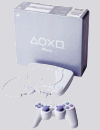
A comparison between the PSOne and Atari 2600 Jr. can be made in that the PSOne was released when the backwards compatible PlayStation 2 was on the shelves. The difference in this case is that the PlayStation 2 was going for $300, if you could even find it. This system is remarkably small; it's great to take on a business trip because it uses up practically no room in the suitcase.
Of course there are exceptions...

For their final hardware release, the Intellivision Model III reverted back to a larger design.

The TurboDuo combined the TurboGrafx-16, CD, and Super System Card into one unit. It sold for $300 and was marketed as a competitor to the Sega CD.

The Sega CDX was a compact Sega Genesis/Sega CD combination unit. It was released when the Sega CD was still a viable system and was by no means inexpensive. Rather than the parent on a budget this was going after the hardcore Sega fan with too much disposable income.

The Lynx II was designed to make the platform more competitive with the Game Boy by reducing the bulky size and increasing battery life.

The original Panasonic 3DO was the size of the average VCR and cost $700. When Goldstar manufactured a lower-cost model Panasonic responded by releasing a smaller, cheaper version of their system. I think without a competitor this variant would not exist making it a different motivation than the other slim units.

The slim PS2 came out in the midst of the PS2-Xbox war. The new style gave it a sophisticated image that blended-in with any entertainment center. It also presented a sharp visual contrast to its bulky competitor. A white version was later produced.

The Game Boy Micro appeared to be Nintendo's attempt to put the GBA line out to pasture. The strong sales of the GBA SP nixed these plans. The small screen and lack of support for the classic Game Boy line left the Game Boy Micro unpopular while the SP stuck around for a few more years.
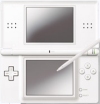
The Nintendo DS Lite was released at the height of the system's popularity. Rather than offer a cheap alternative, the DS Lite was intended to draw in new gamers. It was a smashing success worldwide and cemented Nintendo's dominance in the portable market.
TurboGrafx-16 - Bomberman '93 (1993)

Sometimes it feels like the TurboGrafx-16 was the shortest lived system on this list. 1993 was near the height of the 16-bit console war and the TurboGrafx-16 couldn't keep up with the Genesis and Super Nintendo (although the Japanese equivalent PC-Engine would survive until 1997). What ultimately killed the system was the near total absence of third party support. Hudson Soft was one of their few supporters and published the last game in the US. Bomberman and Bonk were the closest the TurboGrafx-16 had to franchise characters. In that regard, Bomberman '93 was a "safe" game to publish even while the system was faltering. The TurboGrafx-16 had a dedicated, albeit small, following that was practically guaranteed to buy X copies of a franchise title.
Bomberman '93 was marketed as a "party game", no surprise it was a launch title for Nintendo Wii Virtual Console. It was also included on the TurboGrafx-16 Mini.
Magical Chase was released in America right around the same time as Bomberman '93 and had a very limited distribution.
NES - Wario's Woods (December 1994)

I'll admit it, this game totally confused me. Maybe I should have read the manual or something. If I recorded commentary the first time I played Wario's Woods it would have gone like "OK, looks like I'm Toad. There's some weird puff things on the ground, am I supposed to pick them up or something. Oh look, some bombs. I'd better keep those away from the puff things I guess. OK, I stacked a bunch of bombs and they blew up but nothing happened, maybe I'm supposed to kill those cute little puff balls. Yup, that did the trick. Now there's an angry tree descending, screw you tree dude. What's with the pink Muppet in the corner. Doo do do-do-do, menomena!"
Like the previous two entries, the NES finished it's run with a franchise game. Well, there's Toad and something that rhymes with "Mario" in the title so close enough. I don't remember it coming into Electronics Boutique when I worked there. By that time we only had a couple new NES games, like StarTropics 2, stuffed into a single shelf below the Game Boy accessories. If we received Wario's Woods it would have been in displayed in the same low-profile location.
Wario's Woods would later be included with the NES collection on the Switch. That's when I finally took the time to learn how to play it. On the surface it looks like a Tetris or Puyo Puyo inspired game. It plays much more like Pac-Attack which was released a year prior.
TurboGrafx-16 CD - Bonk 3 (December 1994)

To paraphrase something I said about China Warrior: "if you like novelty-sized sprites, you'll love Bonk 3". If there was one thing the TurboGrafx-16 could do better than its competitors it was giant sprites. The third installment of the Bonk series illustrated this in grand fashion. Originally a Turbo-Chip game, Bonk 3 was ported to CD in December 1994. The differences were limited to the soundtrack which received a make-over.
The original Bonk game was a decent platformer. It was fun but not great. Bonk 2 was a significant improvement and could hold it's own against Mario or Sonic. Bonk 3 regressed a bit, the levels seemed to be ripped directly from one of the prequels. Very little was added to the game except power-up candies that grow or shrink the title character, ala Alice in Wonderland.
Bonk 3 was available on the Wii Virtual Console but not included with the TurboGrafx-16 Mini.
Atari Lynx - Super Asteroids and Missile Command (1995)
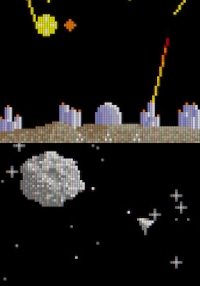
There's not much I can say about the Lynx that isn't common knowledge. Its capabilities blew away the Game Boy but it was never a serious challenger. Poor battery life, high-price, and abysmal third-party support were the culprits.
The Lynx was officially canceled in 1993 but the last licensed US release, Super Asteroids and Missile Command, snuck out in 1995. As the title implies, it's a remake of the arcade classics with upgraded graphics. It would later be included on the Atari 50 collection.
Like the TurboGrafx-16 entry another game, Battlezone 2000, was released at the same time and it's unclear whether that was available in US retail stores. Boxed copies from the U.K. appear on eBay regularly.
The Lynx maintains a small but fiercely loyal fan base and limited releases from Songbird Productions, Telegames, and Super Fighter Team.
Sega CD - Surgical Strike (December 1995)

When the Saturn was announced Sega CD projects started dropping like flies. Seven months after the famous surprise launch the Sega CD was finished. I was a loser working video game retail that Christmas and let me assure you it was dead. It wasn't that every Sega CD owner switched to the Saturn in the previous seven months, it was that new Sega CD games completely stopped. I'd seen systems die out before, but not one with the resounding crash of the Sega CD. It went from one of its bigger releases, Eternal Champions, to slamming into a brick wall in no time. When Surgical Strike hit the shelves we had already stopped carrying the hardware and practically every game.
Surgical Strike was almost the last game for the Sega CD+32X combination as well. The box offered a free mail-in upgrade to the 32X version. However, it was cancelled (and never available in stores anyway thus disqualifying it from this list).
Shadowrun, the final release for the Mega Drive CD in 1996, was nearly the last American Sega CD game as well. However, the US version was cancelled leaving the honor to Surgical Strike.
Sega CD+32X - Slam City with Scottie Pippen (1995) [Unconfirmed]

I'm forced to list this one as "unconfirmed but almost certainly the last Sega CD+32X game". Maybe I should put this in a sidebar instead, whatever. This is proof that personal recollection is a bad way to construct a list like this. When I wrote the draft for this entry I had Fahrenheit as the last Sega CD+32X game. When I actually bothered to look into it I found it was likely the first Sega CD+32X game. I made the "it's the last game I personally saw on the shelf" mistake.
After Fahrenheit, the folks at Digital Pictures decided to re-release a number of their Sega CD games in a Sega CD+32X format. Things now become difficult to sort out. Corpse Killer and Supreme Warrior were 1994 releases that received 32X versions late in the same year. An upgraded version of Night Trap came alongside them. Slam City with Scottie Pippen is often lumped in with these previous three releases. However. the other versions of Slam City (PC, 3DO) were early 1995 releases so I have to think that the Sega CD version was also a 1995 release as some sources list. I can't say with confidence that the places listing it in 1994 are wrong though.
So there just aren't enough facts to call this one for sure, however all signs point to Slam City being the final Sega CD+32X release. At worst it's tied with the other Digital Pictures games.
The 32X enjoyed 1-2 new releases after Slam City, but publishers abandoned the idea of developing games that required both attachments.
Pioneer LaserActive - J.B. Harold: Blue Chicago Blues (1995) [Unconfirmed]
The LaserActive was a system with pluggable modules that allowed it to play Sega CD and TurboGrafx-16 CD games. Some developers created games specifically for these modules that didn't run on the original system. For the purpose of this entry only those games are considered as there are already entries for the Sega CD and TurboGrafx-16 CD.
The LaserActive is one of the more obscure systems on this list and had a very limited distribution. From 1992-1997 I worked at the then largest video game store chain and we never carried it. It was marketed as a "high end" system so I suspect only stores for blowhards carried it.
On a related note, "Stores for Blowhards" would be a wildly successful mall I'm afraid.
Anyway, where was I? Right, so like a couple other systems on this list I'm stretching the "if you couldn't walk into a game store in the US and buy a copy, it's not on the list" criteria a little bit. The LaserActive wasn't widely available but with some effort it could be found.
Like the system itself the release information is hard to nail down. Most games for it were published in 1994 with support withering by 1995. Each release was given a catalog number so assuming that aligns with release order then the last game was J.B. Harold: Blue Chicago Blues. It was released in 1995 for a number of unsuccessful CD systems. So like Slam City this earns the distinction "unconfirmed but almost certainly the last Pioneer LaserActive game". I'm confident enough to list it here instead of under missing systems for whatever that's worth.
Outside of the catalog numbers there's little that documents the actual release order or dates for LaserActive games. J.B. Harold: Blue Chicago Blues is likely the final retail release but I can't say for sure it is.
Virtual Boy - Tetris 3-D (March 1996)

Like the Lynx, there's not much to say about the Virtual Boy that hasn't been said a thousand times. It will go down as Nintendo's biggest blunder and one of the worst consoles developed.
Tetris 3-D would have been a great pack-in title for the Virtual Boy. Maybe Nintendo wanted to prevent people from thinking "Game Boy = Tetris".
Whatever the case, this game didn't hit the stores until the Virtual Boy's final days. By then the system and game library were being cleared out for a fraction of the original price.
Bonus Material: Review from May 1996 issue of Game Informer magazine (0.99mb)
Sega 32X - Spider-man: Web of Fire (Spring 1996)

The poor 32X was always waiting for that one game that would turn it's fortunes. Should have been Mortal Kombat II, but it was released too late. In it's final months it could only manage ports of Space Harrier and Pitfall: The Mayan Adventure that were minimal improvements over the Genesis editions. Spider-man: Web of Fire had the potential to buy the 32X a little time. A popular comic book character starring in a well-reviewed game. However, it saw very limited distribution and was largely forgotten behind the ferocious Saturn vs. PlayStation battle.
As 32X platformers go it's par for the course. It looks slightly better than the average Genesis game but worse than the average Super Nintendo one. The control is a bit wild and you spend a lot of time falling off buildings as a result. I'm a fan of the 32X for some reason but wasn't impressed with Spider-man: Web of Fire.
This game is now a rarity that fetches a hefty sum on auction sites. Although it looks like a bargain compared to the final international 32X release, Darxide.
3DO - Casper (May 1996)

We're only hitting the halfway mark for 1996, The Saturn and PlayStation were in full-swing, the Nintendo 64 was on its way, the PC game market was re-energized by Windows 95. It's only logical that a great purging of old systems would occur in 1996.
3DO development came to grinding halt when the M2 was announced in 1995. The few companies that still supported the 3DO moved their projects to the eventual vaporware platform.
A trickle of games would be finished and released in 1996 for the rapidly fading 3DO with Casper being the last to see daylight. Just what we needed, another mediocre game based on a mediocre movie. Looking back, I'm surprised the 3DO didn't have many more of these bad movie spin-off games.
Sources:
Google Groups - 1996 Archive - 3DO
Casper is listed as the last 3DO game by Digital Press. Google groups (usenet) archive was also used to verify this based on conjecture.
Atari Jaguar - Fight for Life (1996)

There are a lot of obvious statements that can be made about the ironic title of this game. By 1996 the Atari Jaguar was by no stretch fighting for life. With consoles slashed to $50 and cleared off store shelves it was dead. Fight for Life was merely a tombstone marker.
There were grand plans for this game, it was to be Atari's answer to Virtua Fighter. Virtua Fighter 2 was selling a lot of Saturn systems, even to gamers left skeptical by the the Sega CD and 32X. Atari hoped this 3D fighter would breathe new life into the system. However, it came out too late to have an impact. Stores had relegated the Jaguar library to the clearance bin and wedged-in a full-price Fight for Life by default.
Fight for Life was a dreadful game and belonged in the clearance bins though. Like every other game Atari made for the Jaguar, it had that weird polygon-abuse look with unbearably slow animation. Atari's thought process must have been "people loved Hard Drivin' in 1988, let's make everything look like that!" Fight for Life suffered the same problems as the majority of the Jaguar library and ultimately is just as forgettable.
In 1999 Hasbro released the patents for the Atari Jaguar making it very accessible to homebrew developers. Every year or so a new fan game pop-ups for Atari's last console. Fight for Life was included on the Atari 50 collection for anyone who wants to experience it today.
Jaguar CD - Brain Dead 13 (1996)

Here's another case of personal recollection gone wrong. I initially speculated that Highlander was the final Jaguar CD release. I made the same "it's the last game I personally saw on the shelf" mistake. In reality it had a good six-month lead over Brain Dead 13 which was the final Jaguar CD release. By then most stores slashed their Jaguar CD inventory. Over at Electronics Boutique/Waldensoftware, only Dragon's Lair and Space Ace remained. I don't know which chains carried it, but it was out there for those loyal Jaguar CD owners to find.
A year after the Jaguar was canned, Telegames published a pair of shelved games developed by Jaguar licensees. Iron Soldier and World Tour Racing were both made available via mail order in 1997.
Like the Jaguar, a new Jaguar CD game is released by an enthusiast roughly once a year.
Sega Game Gear - The Lost World: Jurassic Park (1997)

In 1996 Sega dropped support for anything that wasn't the Saturn. The Game Gear was a victim of this process. Despite being technically superior, it never kept pace with the Game Boy.
Sonic Blast, released in 1996, was Sega's last big hurrah for their handheld system. This would be the last game most people saw in stores. Almost a year later The Lost World: Jurassic Park was released as a tie in to the film. I can only speculate that work on it started before the Game Gear was discontinued. By then the Game Gear had a minimal presence on store shelves.
The Game Gear was briefly re-released in 2000 but no new games were published.
Sega Genesis - Seconds left in the fourth quarter (1997)
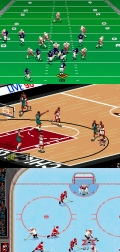
The Sega Genesis and EA Sports line enjoyed a symbiotic relationship. Without the strong sports library the Genesis could have gone the way of the TurboGrafx-16. Without the Sega Genesis EA Sports may not exist today. In the late 80s Electronic Arts wanted to enter the console game market. However, they found Nintendo's licensing terms too restrictive and opted to develop for the Genesis. Sega conceded to some of EA's requests such as allowing them to manufacture their own cartridges and packaging. The EA Sports division became a game publishing powerhouse. Nintendo would ultimately loosen their licensing policies allowing EA to develop for the SNES. However, without the Genesis there's a good chance EA would have abandoned all thoughts developing for game consoles. How did EA ultimately thank Sega for this? By acquiring exclusive game publishing rights to nearly every sports league, thereby destroying the entire Sega Sports division.
It was only fitting in this way that EA published the last three licensed Genesis games. John Madden Football '98, NBA Live '98, and NHL '98 all hit the stores in the early fall of 1997. I'm sure it wasn't a great effort for them. Take the '97 version, update the rosters, add a few bells 'n whistles, bam! '98 version complete. OK, I'm sure I'm oversimplifying the development process but not by much.
My only complaint about these three games is that you have to go through 87 menu screens before you can play. To this day they can't seem to merge "select team" and "select which player controls which team" into a single menu.
Of course none of these were truly the last licensed title for the Genesis, more on that just a little farther down...
Sources:
Super Nintendo - Kirby's Dream Land 3 (November 1997)

The death of the Super Nintendo marked the end of 2D console gaming. Sure, there are some 2D-style platformers and shooters released from time-to-time. Let's face it though, since the Super Nintendo the focus has been almost entirely on cranking-out 3D graphics with wicked shading effects and textures. You can have your Halo 3; I'll take Zelda: A Link to the Past or Super Metroid over it any day.
It's appropriate that this era ended with Kirby's Dream Land 3, an overly cute side-scroller starring a franchise character. To most gamers this was the last new Super Nintendo game they saw in the stores. To most stores it was in fact was the last Super Nintendo game they carried. However, after most video game stores dumped their remaining 16-bit console games one more title snuck out...
Sources:
Nintendo.com: SNES Game List (pdf)[archived mirror] - Nintendo's game list has NBA Live '98 being listed as a March 1998 release, all other sources have it as a 1997 release which is consistent with EA's numbering scheme. Frogger, see next entry, is not listed by Nintendo.
Sidebar - Sega Genesis & Super Nintendo - Frogger (1998)

It's an odd twist for the two bitter 16-bit rivals to technically end on the same note. In 1998, the systems were both available in compact models for low prices. New game production stopped but toy stores still had a supply that would last for a while. Majesco must have figured there was still a viable market for cheap, family-friendly games. They cranked-out a low tech remake of the arcade classic Frogger for the former dominant consoles. This wasn't carried at many stores but I do recall seeing it at the now defunct KB Toys.
Sources:
Sega Saturn - Magic Knight Rayearth (December 1998)
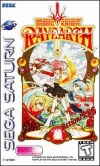
I was introduced to Working Designs by a game called Cosmic Fantasy 2 on the TurboGrafx-16 CD. I was instantly a fan of their ports and built a library of their 16-bit CD selections. Unfortunately I couldn't afford a Saturn or PlayStation back in the day so I missed out on their 32-bit games. They now sell for an astounding sum on auction sites.
If there's one thing Working Designs was (in)famous for it was taking forever to port games. I can respect that. I'd rather wait for a high-quality game than play another uninspired me-too one. The downside of course is that sometimes you can take too long to finish a game. Such was the case for Magic Knight Rayearth. The Saturn collapsed around its third birthday but Working Designs was still working on games for it. Lunar: The Silver Star Story was scrapped while Magic Knight Rayearth was close enough to completion that Working Designs published it in time for Christmas.
Bonus Material: Review from December 1998 issue of Game Informer magazine (749kb)
Game Boy - Pokemon Yellow: Special Pikachu Edition (October 1999)

Confession time, I barely know what Pokemon is. I understand it's an RPG where you train monsters to fight. When it appeared in the US I was in my 20s and wrote it off as something for young kids. When I finally realized that wasn't really the case there were like 400 games in the series. My backlog is too large to give Pokemon another look.
In 1999 Nintendo was trying to wean gamers off the B&W Game Boy and onto the backwards compatible Game Boy Color. Pokemon Yellow: Special Pikachu Edition was a re-release of Pokemon Yellow with some support for the Game Boy Color built it. Yeah, every classic Game Boy game worked in the Game Boy Color but there were some tricks to make games look better in the newer system. This was a way for Nintendo to support both systems while giving people the hint that they should upgrade, similar to their Twilight Princess (and later Breath of the Wild) strategy.
This was the last game made specifically for the original Game Boy and it's perfectly debatable whether the Game Boy Color games "count". For the sake of completeness, the two Dragon Warrior Monsters 2 titles, released in September 2001, earn the distinction of being the final games compatible with the original Game Boy.
Philips CD-i - Solar Crusade (1999)
I paid $5 for my CD-i and sometimes feel ripped-off. OK, it didn't come with a controller or power cable so after I spend $20-$30 to acquire those maybe I'll feel otherwise.
When I started working on this article I expected to find the last CD-i release to be in 1996, 1997 at the latest. 1997 saw a release of Brain Dead 13 which seemed to be the curtain call for the CD-i. After a dry 1998, Solar Crusade saw its way onto both the PC and Philips CD-i. Why would Infogrames release a game for a totally dead system? Why did they decide re-branding as Atari was a good idea? Both questions are equally puzzling.
A few homebrew games, such as Frog Feast, cropped up after the CD-i was discontinued.
Sidebar - Neo Geo CD - King of Fighters 99 (December 1999)
I included the Neo Geo further down so I might as well include the even-less mainstream Neo Geo CD too. It was an extremely obscure console in the US, only the most hardcore SNK fans owned it.
The Neo Geo CD didn't have the longevity of it's cartridge based counterpart. While the Neo Geo would live on for another five years, King of Fighters 1999 marked the end of SNKs CD experiment.
Sources:
game.com - Frogger, Centipede, and Scrabble (1999)

It's almost eerie how close Tiger came to creating the Nintendo DS with the game.com - touchscreen, internet capabilities, inferior graphics to contemporary hand-held systems. Of course the DS has done so many things to compensate for not looking as pretty as the PSP, the game.com could never find a similar way to overcome the Game Boy. The internet capabilities were practically useless as they required an account with their proprietary ISP. The touchscreen turned out to be inadequate for gaming. The only remaining hope was producing a better library.
You can imagine how that turned out.
A total of twenty games were produced, several of them had great titles like "Mortal Kombat Trilogy" or "Duke Nukem 3D" that were poor imitations of the original. The grave for the game.com was already dug when the Game Boy Color arrived to throw on the dirt. Frogger, Centipede, and Scrabble were released for the Christmas season of 1999. By the following Christmas no sign of the game.com could be found in stores.
Sega Dreamcast - NHL 2K2 (February 2002)
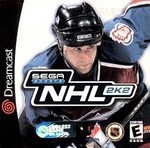
Dreamcast, we hardly knew you. Although it was technically on the shelves for three years it felt like it was only a few months. Well, maybe I just feel that way because I bought it for $99 when it was cleared out in 2001. I still have troubles understanding why it wasn't competitive. Graphically, I can't see the difference between it and the PS2 or Xbox. I'm sure some PS2/Xbox fanboys will foam at the mouth at this statement. Whatever. I think the Dreamcast more than holds its own against the other systems of its era.
The Dreamcast called it quits like many of the later systems, with a sports game. NHL 2K2 was a notable improvement over its predecessor. The initial NHL 2K was so poorly received that they passed on releasing a 2K1. The result was a more refined 2K2 sequel. Unfortunately it was released more than a year after Sega ceased production of the Dreamcast.
The Dreamcast maintains a very active homebrew community today.
Sources:
Nintendo 64 - Tony Hawk's Pro Skater 3 (August 2002)
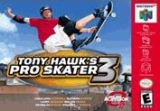
The Nintendo 64 was released a year after the PlayStation and faced an uphill battle. The PlayStation had its second generation games hitting the shelves while the Nintendo 64 was showcasing launch titles. The technical specifications between the consoles were close enough that it was irrelevant.
Still, the Nintendo 64 managed a six-year run and produced some of the most critically acclaimed games of all time. Its final release, Tony Hawk's Pro Skater 3, is among the top-rated titles.
In an interesting footnote, Tony Hawk's Downhill Jam was a launch title for the Nintendo Wii.
Game Boy Color - Harry Potter and the Chamber of Secrets (November 2002)

The Game Boy color was an unnecessary system in many ways. It was released in 1998 when Nintendo had long vanquished their competitors in the portable market. The Game Boy Advance was presumably in development at the time. For all intents and purposes the Game Boy Advance is a held held Super Nintendo while the Game Boy Color is only a souped-up NES. Certainly Nintendo could have slid by with the black & white Game Boy for a couple more years.
Harry Potter and the Chamber of Secrets plays like an adventure/RPG combination game. It follows the story of the book with light exploration. There is a turn-based battle system but battles are avoidable. I like this version more than the 32-bit versions which play more like a collection of demo ideas.
Sources:
Sidebar - Neo Geo - Samurai Shodown V Special [AKA Samurai Spirits Zero Special] (October 2004)
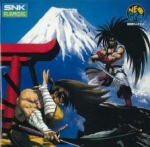
This is a slight exception to the "if you couldn't walk into a game store in the US and buy a copy, it's not on the list" rule. My own experience with the Neo Geo is limited. I first heard of the system way back in high school, 1990 or 1991. The ~$700 sticker price, and ~$200 games, put it way out of my reach. There was one obnoxious rich kid whose parents bought it for him and it delighted him to talk about his beloved Neo Geo. "Yeah, you can play a total of four games. Good for you." was my reaction.
A couple of years later in the junior college game room I'd see people crowded around the Neo Geo arcade machine battling away at Samurai Shodown. I tried it but didn't care for it nearly as much as Street Fighter II or Mortal Kombat. It was too slow paced and filled with with illogical special moves. Let me just fire off a quick back, forward, half-circle forward, back, A. My opponent will never see it coming. I'd briefly get into one of the King of Fighters games but it didn't hold my interest for long. Bust-a-Move was different story altogether. I got hooked on that in the arcade and bought the Super Nintendo version the day it hit the shelves. After that I never touched a Neo Geo again.
I originally passed on including the Neo Geo in this article because it obviously wasn't a big seller. However, when I realized it lasted for 14 years I rethought the relevance of the system. Yeah, it'll always be better known as an arcade machine but it was also a home system. It was a novel idea. An arcade system with interchangeable cartridges that can also be played at home. Unlike the 16-bit systems of the time, the Neo Geo could literally deliver an arcade game in your living room.
The slow death of the arcade, and MAME, ultimately led to the demise of SNK. They wrapped-up their groundbreaking system with Samurai Shodown V Special [AKA Samurai Spirits Zero Special]. Why does every Neo Geo game have an alternate name? I assume it's a translation thing, they are infamous for wacky translations after all. Whatever the case, it was the last installment of the fighting series that graced arcades for over a decade. I doubt there will ever be another system that tries to do what the Neo Geo did.
Sources:
Sony PlayStation - FIFA Soccer 2005 (October 2004)
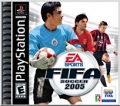
I'm doing some quick math and the 9-year production run of Sony PlayStation games ties the NES. I think they were equally important systems. The NES rebounded the entire video game industry, the Sony PlayStation expanded it beyond the core market of kids and nerds. Like the NES, the PlayStation had several years of new game releases after its predecessor was out.
The FIFA series began on the Sega Genesis and was an immediate hit. Like Hockey, I think more people buy FIFA soccer than watch it on TV. I'm not going to launch a big "soccer is boring" rant but let's just say FIFA soccer is 1000x more exciting than the real thing (same for hockey). I was a little surprised when I saw Madden 2004 for PlayStation on the shelves in 2003. Given EA's record of releasing updated games for dead consoles it wasn't too big of a shocker though. However, it was quite surprising to learn that FIFA Soccer 2005 was released for the PlayStation in October 2004 while passing on Madden 2005. Of the two I'd expect Madden to greatly outsell FIFA (in the US at least), even to a diminished PlayStation market.
For the sake of thoroughness I'll note that NFL Gameday 2005, released in August 2004, was still available new in stores until late 2006 after FIFA 2005 was generally gone.
Sources:
Sidebar - Gizmondo - Worst System Ever? (2005)
What qualifies a system as being the "worst ever"? The SuperGrafx, with its measly seven game library, goes for hundreds of dollars on ebay now. It's a prized collectors item in spite of its commercial failure (or maybe because of). Will the Gizmondo ever be a system people drop wads of cash on? Doubtful.
I think I actually despise the Gizmondo. It represents everything you can do wrong with a game system:
-Focused on hardware capabilities over game quality
-Created by people with no game industry experience who figured they could buy a seat at the table
-Poorly conceived features that are unrelated to gaming, i.e. SMS capabilities but no keypad, if you think a numeric pad is annoying for SMS just wait until you have a control pad and six buttons to work with
-Launch library that didn't appeal to any gaming demographic
-Optional ad-sponsored hardware available
It really just comes down to one thing though - I can't think of a system I want to own less than the Gizmondo. Think of every game system you don't own and rank them in the order you'd like to acquire them. What goes beneath the Gizmondo? Based on that alone I will happily label it the worst system ever and defend that position if the one Gizmondo fan on earth ever reads this.
Oh, so what's the last game for the Gizmono? Trick question, it had eight games in the stores for its US launch and none after that. The world never learned if "Momma Can I Mow The Lawn" was really as crappy as the name sounded.
Sources:
Nokia N-Gage (MMC) - Warhammer 40,000: Glory In Death (March 2006)

Some of the things I said about the Gizmondo apply to the N-Gage. However, it was marketed more as a phone than a gaming system unlike the Gizmondo which was marketed as.. well, I'm not sure what.
The game library for the N-Gage was actually decent though. I'm not planning to seek out an N-Gage out but there are a few games I wouldn't mind having. So I suppose it's ahead of the Gizmondo on the aforementioned list but below many others.
As a cartridge based system (MMC format), the last game released was Warhammer 40,000: Glory in Death. I wish there were more RPG and strategy games for mobile phones. They fit the mobile format so much better than action games.
Civilization is listed as the last N-Gage game by some but it came out in February 2006, one month before Warhammer 40,000: Glory in Death.
The N-Gage as a gaming platform wasn't completely dead in 2006. If you owned a Nokia phone you can download the N-Gage runtime and enjoy a variety of titles for a couple more years.
Nintendo GameCube - Madden 08 (August 2007)

I know it's atypical but the Nintendo GameCube is my favorite system of its generation. It offered a return to the basics, to simplicity, while the others tried to make games more epic and complicated. Looking back, it was preview of Nintendo's direction to come with the DS and Wii.
Unlike Nintendo's previous entries, production of new GameCube games halted almost immediately after the replacement system was available. Porting GameCube projects to the Wii is apparently simple given their similar architecture. Even easier is slapping a new roster on an existing game engine. With little publicity, EA Sports produced a GameCube version of Madden 08 along with all the "next-gen" editions. Some retailers declined to carry it, making it tough to find in stores, but it was there for anyone looking hard enough.
Power Rangers: Super Legends was almost the final GameCube game. It was scheduled for release in November 2007 but quietly cancelled. Adding to the confusion, several online stores continued to accept pre-orders for it well into 2008.
Sources:
Game Boy Advance - End of an Era (Fall 2007-February 2008)
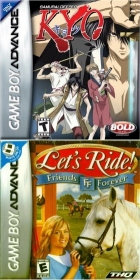
The Game Boy brand almost made it 20 years, it was only a few months shy. Its eulogy was written when the DSi, without a Game Boy Advance (GBA) slot, crossed the ocean in April 2009. This DS upgrade represented a change in direction for Nintendo's handheld strategy. With the exception of the Game Boy Micro, all the Game Boy Advance variants could play the entire back catalog of Game Boy titles. Having missed out on the Game Boy Color, this was a major selling point when I bought the SP. Although the DSi marked the official end of the Game Boy line it was already more than a year removed from having its final new title published.
The last game released in the United States was Samurai Deeper Kyo in February 2008, it had been available in Japan for over five years. However, it was not sold as a standalone game. It was included as a premium in the DVD boxed set for the anime series of the same name. To find the last retail game released you have to go back a couple months to Let's Ride: Friends Forever, which is apparently some kind of horse care simulator.
Let's Ride: Friends Forever was the very epitome of the late GBA selection. In its twilight years the GBA became an inexpensive system for kids. For under $200 a parent could easily buy one with a huge stack of used/clearance games. Publishers spotted this trend and responded by dumping games with titles like Dogz, Catz, Horsez, and Box Jellyfishz.
I suppose I could consider it a shame that a great system like the GBA ended with a flood of shovelware. Instead I'm impressed that the Game Boy line reinvented itself one final time to squeeze out a few more years of existence. Looking at the other systems on this list, most didn't survive for three full years after their replacement hit the shelves. Heck, some didn't make it three years period. The GBA spent its waning days introducing a new generation to video games and probably laying the foundation for another 20 years of handheld success for Nintendo.
Educational game publisher GXB Interactive released a couple games around this time as well. Their specific release dates aren't documented and it is possible they may have come out even later than these two. However, only being available for online purchase removes them from consideration for this list.
Sources:
GameFAQs - Let's Ride: Friends Forever
THQ - Let's Ride: Friends Forever [offline, no mirror]
Microsoft Xbox- Madden 09 (August 2008)

When Madden 08 was released for Xbox and GameCube I originally noted it as being the last release for both systems. It had been months since a new title was released for either and it sure seemed like they were done. I was incredibly surprised when I saw a preview for Madden 09 that listed the Xbox as a system it was being released for. After a full year of no new games it's usually safe to say a system is dead, not the venerable Xbox though. Fans of the system can take some small comfort in knowing they officially outlasted the GameCube.
In the original Madden 08 entry I noted "I suppose there's still a 1%-5% chance another sports update will be squeezed out for the original Xbox. It's relatively easy for a powerhouse like EA Sports to crank out another annual update. If the install base stays high enough they'll keep doing it. Go into any game store and you'll see that the original Xbox has a greater presence than what's left of the GameCube." OK, the last part of the statement didn't pan out. I still see plenty of used GameCube games commanding $20-$30 but practically nothing for the Xbox breaking $10. The first part was accurate enough though. The additions to the Xbox version of Madden 09 are minute compared to the Wii, PlayStation 3, and Xbox 360. It was low-effort for EA and apparently there are enough Xbox holdouts to justify the investment. I figured Xbox owners either had a PS2, or upgraded to a newer console, making this game unnecessary.
I have a strong suspicion that Madden 09 is a sign of how most future consoles will end. It would not shock me in the least if the eventual Wii, PlayStation 3, and Xbox 360 entries are all Madden sequels as well.
Sources:
PlayStation 2 - One last kick (September 2012 - November 2013)

It's debatable whether the PlayStation 2 or NES was the most dominant console of its generation. The NES achieved a higher market share, one that will likely never be duplicated, but the PlayStation 2 sold in numbers that would have seemed unbelievable at the time of its launch.
In the US FIFA Soccer 13, released September 2012, was the last PlayStation 2 released. For the rest of the world it was Pro Evolution Soccer 2014. In-between them was a non-US release of FIFA 14 (which dropped "Soccer" from the title).
It is not surprising for the PlayStation 2 to end with an annual sports update. The only thing slightly unexpected is that a soccer game was the final release instead of a Madden game. I suspect this is due to shifting demographics in the US. I am guilty of being the stereotypical American dude that doesn't understand the appeal of soccer. I at least acknowledge it's hugely popular with nearly every other demographic. This means it's possible future PlayStation iterations will also end with soccer games.
I haven't played Pro Evolution Soccer 2014 but the reviews are generally positive. I watched a few videos of it and its PlayStation 3 counterpart and they're not that far apart really. The PlayStation 3 version has more detailed spectators and cut-scenes but the players look pretty darn similar. It's a very impressive effort for a last release.
Nintendo DS - Big Hero 6 Battle in the Bay (October 28, 2014)

It was easy to predict that the original DS would end with a licensed game for kids. Most of the late releases were of that variety and the annual sports updates stopped shortly after the 3DS was announced.Big Hero 6 Battle in the Bay was a tie-in to the Disney film. How it relates to the film is a little fuzzy. It comes across as a brawling game that was adapted once the game studio acquired the Big Hero 6 license.
By 2014 many DS systems were relegated to "hand me down" status. I suspect it's close enough to its 3DS cousin that the effort to produce this version was minimal. So why not finish the original DS version if just to sell a few copies to younger siblings with cracked DS screens everywhere.
Disney Planes: Fire & Rescue was announced for the DS but that version appears to have been scraped.
I debated a bit whether the DSi is a distinct system from the Nintendo DS. I may create a separate category for it later. For now I'll note that the last DSiWare game was Crazy Train released all the way out in 2016. It looks to be inspired by Loco-Motion, a 1982 arcade game that is probably better known for the Intellivision home version.
PlayStation Portable - Summon Night 5 (April 7, 2016)
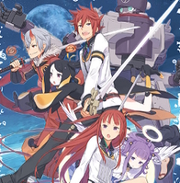
One reason this article seems perpetually out of date is because of my reluctance to accept that a system has really seen its last release. The PlayStation Portable is a shining example of this. The last physical release for the PlayStation Portable for almost two years was FIFA 14 in September 2014.
FIFA 14 was labeled "Legacy Edition" which I understand means it's the previous version of the game with an updated roster. This is something cheap & easy for the publisher to produce. The game doesn't have to be a smash hit when the development costs are tiny, there just have to be enough PSP holdouts.
A few months later Brandish: The Dark Revenant was released as a digital game for the PlayStation Portable. Surely that had to be it right?
Nope, in spring 2016 Summon Night 5 was released in the US both digitally and physically. It was a perfect final release for the PlayStation Portable in the US. This also-ran to the DS had one thing going for it - heavily belated ports of just outside the mainstream Japanese games. The PlayStation Portable, and its offspring the Vita, are popular among a niche of gamers looking for Japanese games that in the past would never have come to the US. This includes the lesser known Falcom titles (like Brandish), interactive fiction games, and JRPG/strategy crossovers.
Summon Night 5 was released all the way back in 2013 in Japan. That three year turnaround is actually pretty zippy compared to the 6 or so years it took to bring Brandish to the US. This is the most fitting game the PlayStation Portable could have ended on.
Sources:
Actually, I thought the Ouya was pretty good (2017)
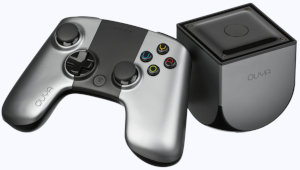
I backed the Ouya and don't feel ripped-off. I'm not rationalizing. It was $99 and an extremely easy way to run emulators at the time. There are Android boxes that are 10x more powerful and cheaper. I'll eventually upgrade to one of those. We're talking about 2013 right now though. We didn't have the bevy of options available today. The first Raspberry Pi was available in 2013. It was cheaper but a lot more work. The Ouya was zero effort to run. Once I swapped-out the controller for a PlayStation 3 Dualshock it was my go-to for emulators.
I suspect few used the Ouya to run Android games. Anyone buying an Ouya had a perfectly capable Android or iOS phone. Emulation, media boxes, and general tinkering are the most obvious usages for the Ouya. It had a virtual store and some might even have downloaded games from it.
What was the last release for the Ouya on its official store? As of whenever I'm writing this, Wikipedia has Super Indie Karts as the final release in March 2017. It of course may be updated by the time you're reading this. The last snapshot of the Ouya site on web.archive.org lists Super Roman Conquest in December 2017. It sure doesn't look like that game came out for real though. So maybe something else from that archived page? I don't know if it matters that much. The last few months had a scattering of indie games which is what we all expected.
PlayStation 3 - FIFA 19 (September 28, 2018)

So this is just how PlayStation systems are going to end, with an updated roster for an several year-old soccer game engine. I'm surprised there isn't also a Madden 19 for the PlayStation 3. It could be that this game is really targeting players in regions that are a few years behind in console hardware. If that means a few US gamers, or more likely collectors, get it too that's alright in my book.
This isn't the worst way to go. FIFA 19 will certainly be played heavily by those who buy it (minus the collectors).
Sources:
Wii U & Xbox 360 - Dancing to the end (October 23, 2018)
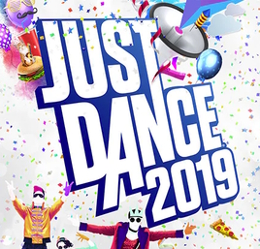
With these systems and the Wii also getting Just Dance 2019 it's a little surprising the PlayStation 3 didn't receive a port. I can only speculate it has something to do with PlayStation 3 discs being more expensive to print than the other two systems, purely a guess though. I'd say it's due to the family-friendly nature of the Wii & Wii U but the Xbox 360 throws a curveball at that argument. Of course there are family-friendly games on the Xbox 360 but I always think of it as the Halo system.
This article, as noted, is biased toward games with US retail releases. For the sake of completeness I'll note that the Wii U continued to receive digital games until the end of 2021. As of the last update to this page, Captain U holds the title of last digital Wii U game. There's also Shakedown Hawaii, more on this later..
On the Xbox 360, Jade Empire was the last digital release in June 2019, Microsoft kept the store open until July 2024.
Sources:
ubisoft.com - Just Dance 2019 [removed, no mirror]
Jade Empire [Internet Archive]
Microsoft: The Xbox 360 Store Will Close July 2024, But You Can Keep Playing Your Favorite Games
Nintendo 3DS - Persona Q2: New Cinema Labyrinth (June 2019) and Silver Falls - Ghoul Busters (July 14, 2022)

Oh sure, Nintendo said the Switch wasn't a replacement for the 3DS but you didn't really believe them did you? Shortly after the Switch launched nearly all 3DS development ground to a halt. The Switch Lite was the final nail in the coffin. After it launched we only saw a few new physical 3DS releases. However, they were some of the best games on the system. If you had to survive some kind of 12 month lock-down with only the final 10 physical 3DS games it wouldn't be a bad time at all.
The last of these physical releases was Persona Q2: New Cinema Labyrinth in June 2019. It's a dungeon-crawler featuring characters from multiple Persona games. It's a total fan-service game but there are more than enough Persona fans to support it.
Since Persona Q2 was released there were over dozen download-only games by small publishers released for the 3DS. To be blunt, most look like an example from a "how to program your first game" book written in the late 1980s. One exception is Sungrand Studios who released several games in their Silver Falls franchise in the early 2020s on the 3DS. Silver Falls - Ghoul Busters earns the distinction of being the last game approved for the 3DS eShop. They released it less than a year before Nintendo's planned date to take the store offline. I hope it was worth the effort for them. Seriously, I'd like to think there are just enough people that want to (virtually) own these late games to make it profitable for the studio.
I didn't create a separate entry for the New Nintendo 3DS. Maybe I should, it's another debate. This "what is the definition of a distinct console?" problem is only going to grow more complicated over time.
The New Nintendo 3DS was released in February 2015 and had a very small number of exclusive releases. The last one being Fire Emblem Warriors just 2.5 years later. I bought a New Nintendo 3DS XL for no particular reason. I only tried one of the exclusives but quit after a few hours because it was terribly boring. To spare my inbox I won't say which game it was. It's still a good portable system, I am more inclined to take it on a trip than the Switch. The 3DS line is the last Nintendo console to not complain when it doesn't have an internet connection. Downloaded games that you paid for play just fine, the way it should be. On the Switch it's possible to play downloaded games that you paid for in airplane mode but eventually it will complain that airplane mode has been active too long.
Nintendo Wii - Just Dance 2020 (November 5, 2019)
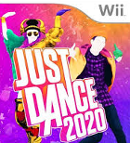
If you want to infuriate a "hard core gamer" just remind them that the Wii easily topped the Xbox 360 and PlayStation 3 in the sales department. It's not really all that close, either would have to sell ~20 million units to catch-up. Then remind them it received a new game release a year after the other two were dead. There's a demographic of gamers I can't relate to who think casual games shouldn't exist, that game companies should only target 18-35 year-old dudes. The Nintendo Wii is the only counter-argument needed against this mindset.
The first home video games were marketed as a family activity. Go Google some Odyssey ads and you'll see families crowded around TVs. The Wii returned home game consoles to their roots. The Wii's final days are a reflection of that with late releases like Just Dance 20XX and Skylanders Trap Team.
As of this update (November 2019) the last game released for the original Wii is Just Dance 2020. It will probably sell a few thousand copies over Christmastime to people who have a Wii hooked-up and want something to play on New Years Eve.
It seems extremely unlikely there will be a Just Dance 2021 on the Wii, but I thought the same thing a year ago.
Sources:
ubisoft.com - Just Dance 2020 [removed, no mirror]
Sidebar - Shakedown Hawaii (July-August 2020)
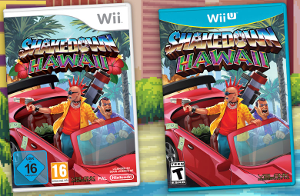
Here's a game that really messes with the criteria outlined at the start of this article. The developer of Shakedown Hawaii was able to secure licenses from Nintendo to produce physical copies on the Wii (UK-only) and Wii U. A full 10 months after Just Dance 2019 was released the Wii U received a new licensed physical release. It was not sold in retail stores for many obvious reasons. Did I mention it was a licensed release? That makes it quite a bit different from typical homebrew/indie releases. Eventually someone will crack whatever needs to be cracked to develop physical Wii U games without Nintendo's permission. When that happens there are sure to be a few more games floating around. None of them will hold the distinction that Shakedown Hawaii has of being the true final licensed physical Wii U release.
Shakedown Hawaii was also one of the last 3DS digital releases but a year shy of being the final game.
The PlayStation Vita slowly fades away (July 20, 2021)

The Vita is the first system to really make me reconsider the criteria for a "last" game. From a retail perspective the Vita was dead the minute Nintendo Switch launched. Even before then it had a limited retail presence. To an average shopper the Vita stopped being a viable system as far back as 2015.
The Vita has a very strong community of people happy to spend a lot of money on games for it though. I think it's the type of gamer who enjoys games that aren't very popular in the US. These are the childhood TurboGrafx-16 owners all grown-up. At the 2021 Midwest Gaming Classic, for example, there were vendors with piles of import Vita games that looked quite busy. I understand the appeal. My Vita library is almost entirely JRPGs with the occasional visual novel. It's a solid system for those genres. They aren't what extended the lifetime though.
Indie games kept the Vita going far longer than expected. Certainly far longer than Sony expected with their attempts to kill the system thwarted by the indie game community. 5 years after the system seemed dead it continued to be an "indie darling". I think I understand this too. It's a Venn diagram of "people who find AAA games annoying", "people who like mobile games", and "people who don't like playing games on their phone". I fit right in the center of that too. The Vita is a great option here, even after the Switch was released the Vita had a deeper backlog of indie games. The SteamDeck will most likely be the thing that fills this niche best in the future.
From a practical standpoint, the Vita died on July 20, 2021. That was the final date Sony accepted new games on the virtual store. The last games to make it in were Brotherhood United, Mind Maze, Russian Subway Dogs, Witchcraftly, and Ultra Mission. All predictably indie titles. Still, what you could buy is based on region. In the US I only see Russian Subway Dogs making it the last virtual US release.
I don't think I'll be able to accurately predict the last physical Vita game. I suspect it will be a game that's a few years old at the time of its printing. This might be the first system I make the "Limited Run Games exception" for since they were publishing Vita games when it was a live system too. Their last physical release was Papers, Please in 2020 (along with a reprint of Super Meat Boy). Papers, Please was originally released in 2017. I wouldn't be surprised if one of these last virtual games, or something else entirely, received a physical release at some oddball time.
The Google Stadia is worm food (January 13, 2023)
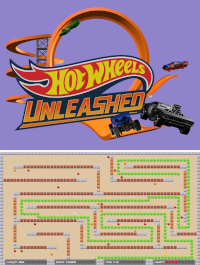
What's this? A system without physical media? It clearly doesn't qualify for this list. Yet here I am including it. The Stadia suffered from a similar problem to the Dreamcast. Everybody (everybody) knew this would be discontinued in 2-3 years. That's what Google does. They come up with a neat idea, spend an insane amount of money on it, then grow bored with it. Once the Steam Deck was announced I knew the Stadia was not long for the world. They are different things, I get that. Ultimately they are both systems to play PC games without a PC. The Steam Deck does it in a way that people actually want so it won.
Hot Wheels Unleashed Game of the Year Edition had the misfortune of being released just hours, or maybe minutes, before Google announced they were shutting the Stadia service down on September 29, 2022. That was effectively the last release. A mere five days before the official January 18th, 2023 end-of-life date Google released Worm Game. It's something they used to test the system, given as a parting gift to the last few Stadia players.
Unlike every other system on this list, the death of the Stadia service means the games are gone for good. OK, not really. They're still on Steam and other similar things. Maybe not Worm Game or anything built specifically for the Stadia but most others for sure. Google decided to be cool and refund everyone's purchases so no harm no foul. Who else does that? "Sorry this system didn't work out, here's your money back". Sega alone would owe me like $1000.
Long-Term Forecast - Xbox One
My prediction: The Xbox One and PlayStation 4 are tough to predict. Both systems have replacements at this point but they also have dozens (hundreds really) of indie developers making games that don't require the latest hardware. They will continue to support the previous generation for various reasons. Some don't want to turn any potential customers away. Others enjoy the novelty of it. Just Dance 2026 is likely to be the last major release. Some very small developer will release a new game on literally the last day the Xbox One accepts new submissions just to own the last release crown.
Long-Term Forecast - PlayStation 4
My prediction: Same as Xbox One entry above but with FIFA 26 as the last major release.
Long-Term Forecast - Nintendo Switch
My prediction: Just Dance 2026... maybe 2027. Then again, the online store might accept submissions all the way until 2028 or later.
Long-Term Forecast - Intellivision Amico

My prediction: The current holders of the Atari IP now own all* the Intellivision IP except for the Amico which will probably never be released. Actually, let's go with "never". The Amico will never be released. I have an RDI Halcyon entry though and the Amico is as real as the Halcyon. There are some prototype units floating around. Said prototypes might be able to play a couple remakes of Intellivision games and Cornhole. A cornhole game was on the Wii 16 years earlier, it's an odd thing to build a console around. I'll go out on a limb and say the Wii version is more fun.
No, the smartphone games branded "Amico Home" (or whatever their brand name is this week) don't count.
* = yes, I'm aware a couple former Intellivision properties were sold to a different company that isn't the IP holder of Atari.
Long-Term Forecast - Nintendo Switch 2
Obviously this is placeholder for now. I'll give it a shot anyway though...
My prediction: The Legend of Zelda: Oceans of Eternity in 2033. It will also be a launch title for the Nintendo Switch 3 which will be called something else.
Concluding Thoughts
While writing this article I learned that "Last Call" games fit into one of four categories:
Franchise Games: Sonic the Hedgehog, Bomberman '93, Wario's Woods, Bonk 3, Super Asteroids and Missile Command, Tetris 3-D, Jurassic Park: The Lost World, Kirby's Dream Land 3, Pokemon Yellow: Special Pikachu Edition, Samurai Shodown V Special. Call it "going out on your own terms". Instead of letting the system die with whimper there's one last game featuring a favorite character or title. Of all four, this is my favorite way to see a system wrap things up. It also seems to be Nintendo's trademark.
Yet Another Sports Update: EA '98 line for Genesis, NHL 2K2, FIFA Soccer 2005, Madden 08, Madden 09. Again, updating an existing sports game with a new roster isn't rocket science. Low production costs + guaranteed sales of established brand = generous profit. They'd be stupid not to do it.
Last Ditch Effort: Intellivision Christmas '87, Secret Quest, Spider-man: Web of Fire, Fight for Life. Sometimes a publisher will try to resuscitate a failing system with a "killer app". They think they can get out that one game that will turn the tide. In the process they may produce a memorable title, but not the desired turn-around. Sometimes, as with Fight for Life, they illustrate exactly why their system failed. Using the bar analogy, they're the guy dumping coins into the jukebox when everyone else is leaving.
We've Come This Far, We Might as Well Finish: Gremlins, Midnight Mutants, Casper, Magic Knight Rayearth, Tony Hawk's Pro Skater 3, Harry Potter and the Chamber of Secrets, Persona Q2: New Cinema Labyrinth. Game development is an expensive and time-consuming effort. When a new system is released game companies need to take a hard look at ongoing projects. Their options are: port the game to the upcoming console, cancel the project, or finish for the soon-to-be-discontinued platform.
There's a book I'd recommend titled "Collapse". In it the author answers the question "what was the Easter Islander who cut down the last tree thinking when he did it?" The answer is that the deforestation of the island occurred over such a long period that he had no memory of the lush forests once there. Not to trivialize the destruction of an entire population, but an analogy can be made to gaming. When someone saw Wario's Woods in the shelves in 1994 they probably never thought "is this really the last NES game?" Gamers have a short attention span and by December 1994 it already seemed like the NES was ancient history. The days of its dominance were long-forgotten.
I think the bar analogy is still the more apt one though. Some game systems, like the NES and PlayStation, were the club with a line out the door. The really trendy, free-spending, patrons left at the first sign of an even trendier establishment. Everyone else soon followed. Other game systems, like the Jaguar or TurboGrafx-16, were the dingy tavern with a dozen depressed drinkers. A few "cool" people would stumble in but leave after seeing the rest of the crowd. When closing time rolled around the few customers left were more depressed than when they entered.
I wrote this article because I thought it would be fun to chronicle these final games. In a way it turned out to be almost sad. These systems gave gamers countless hours of escape from their worries. These final games consumed months of development effort only to be instantly obscure. In the end they couldn't avoid the fate that every video game system will suffer.
Missing Systems
Despite my best web searching efforts I couldn't find anything that identified the last releases for the following failed systems:
Colecovision
The ColecoVision should have been one of the easiest systems to research. Although it wasn't the most popular system in its time it maintains a hearty fanbase today. There's a ton of information about it online but nothing that points to its final retail game.
There are a few things known for sure - the system was produced into 1985 even though Coleco's video game and computer division was struggling. A lot of games were released for it in 1984 but in 1985 there was nothing new released to the stores. Telegames began publishing games and selling them over mail order in 1985, they'd continue to support the ColecoVision for many years.
Some sites list Super Cross Force as being released in 1986 while others have it at 1983. The Atari 2600 equivalent was released in 1983 and the title screen says (c) 1983 so I think the 1986 date is erroneous.
With Super Cross Force out we're left with one of the 1984 releases but which one? I don't have the answer but I'm going to keep looking.
Further reading: New York Times - January 3, 1985 - Coleco gives up on the Adam
Pippin
The Apple/Bandai Pippin didn't last long and had a tiny library. Unfortunately there's no source that lists the release order for it's titles.
Amiga CD32 / Amiga CDTV
Both of these were flops in the US but enjoyed moderate success in Europe. Even the European release lists aren't documented especially well in the release date department though.
Neo Geo Pocket Color
I gotta think someone knows the answer for this one. The Neo Geo Pocket Color wasn't a commercial success in the US but has a decent cult following. Sooner or later someone will post a release list with dates.
Sega Pico
This is one of the most under-appreciated systems I can think of. It's a Sega Genesis with a touchpad, I find it to be a very innovative little system. Unfortunately there's no source I can find that lists when games were released for it. Being aimed at kids, it never developed the kind of internet following other obscure consoles have.
RCA Studio II
The game list is well documented, but not the release order.
Tandy VIS
No game list that anyone has published online.
Nuon
Even though the Nuon bombed it should also be one of the easiest systems to research since it came out when the internet was booming. There should be dozens of abandoned sites detailing every bit of minutiae about it. There should be...
Although there is much documented about the Nuon the release dates are missing. It's even possible this is like the Gizmondo, a system with only launch titles.
Here's some further reading on the Nuon:
nuon-eternal - software [Internet Archive]
SFGate - Nuon Gives Shine to 'Bedazzled' / Technology faces uncertain future
Anything not listed here should be filed under the "not relevant" category. This would include things like the Leapster, computers marketed as game machines (Atari, Sega, NEC, and Commodore all made things like that), and several other handhelds that didn't break into mainstream retail.
Related